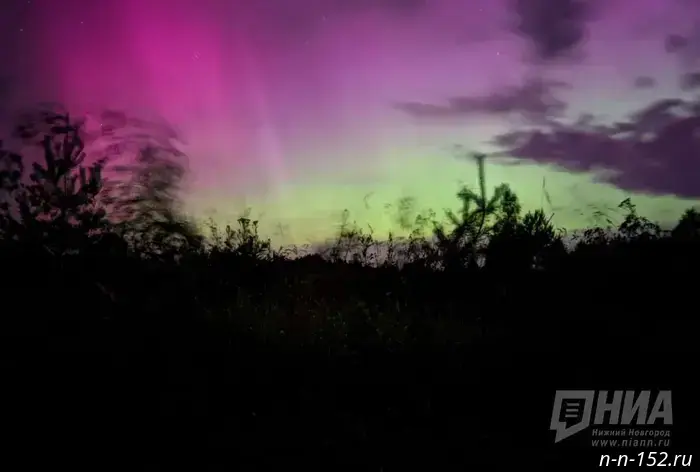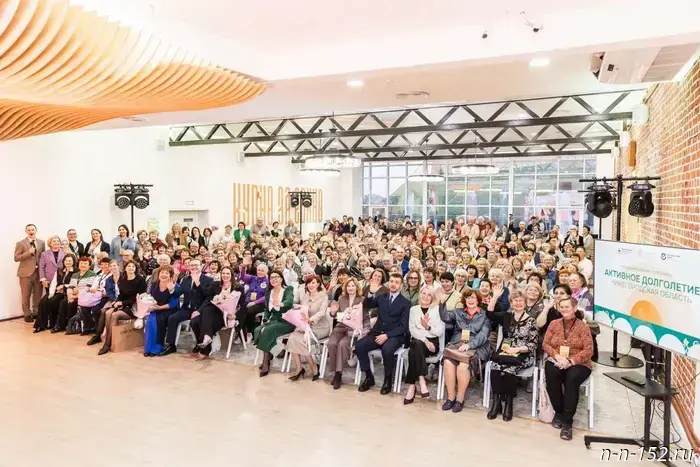
Scientist Bogachyov explained whether the aurora borealis can affect people's well-being.
October 1, 2025 18:33 Society
At the end of September 2025, residents of Russia observed a vivid aurora caused by a powerful solar flare. The phenomenon could be seen in Moscow, Saint Petersburg, the Nizhny Novgorod, Sverdlovsk, Omsk, Yaroslavl, Murmansk and Arkhangelsk oblasts, Tatarstan and Bashkortostan. Astronomers also suggest that the display may become even more impressive in the coming days.
The aurora is the glow of the upper layers of the Earth's atmosphere that arises from the interaction of solar activity with our planet. It occurs when streams of charged particles — high-energy protons and electrons — are ejected from the depths of the Sun. When these particles reach the Earth's atmosphere, they interact with air molecules, causing them to become excited and subsequently emit light.
"When these particles collide with the atmosphere, it heats up and begins to glow. This happens at an altitude of about 100 kilometers," Sergey Bogachyov, head of the Solar Astronomy Laboratory at the Space Research Institute of the Russian Academy of Sciences, explained to the TV channel 360.
The auroral glow can take on different colors, creating impressive visual effects.
The aurora itself is completely safe for people and equipment, the scientist reassured. "The aurora is purely an optical phenomenon, and there is no need to fear it," he emphasized.
However, increased solar activity can lead to geomagnetic storms on Earth, which can affect both people's well-being and the operation of equipment. Thus, on Tuesday, September 30, the planet was hit by a moderate geomagnetic storm that lasted more than a day.
The aurora can be seen with the naked eye, but for the best effect it is recommended to use cameras or mobile phones, as they are more sensitive to light and can therefore capture brighter and clearer images, Sergey Bogachyov noted.
Earlier it was reported that strong magnetic storms would trouble residents of Nizhny Novgorod in the first half of October.
NIA "Nizhny Novgorod" has a Telegram channel. Subscribe to stay informed of the main events, exclusive materials and timely information. Copyright © 1999–2025 NIA "Nizhny Novgorod". When reprinting, a hyperlink to NIA "Nizhny Novgorod" is required. This resource may contain 18+ materials.
Другие Новости Нижнего (Н-Н-152)
 300 people became participants in the educational program "Active Longevity" in the Nizhny Novgorod Region.
Nizhny Novgorod News
300 people became participants in the educational program "Active Longevity" in the Nizhny Novgorod Region.
Nizhny Novgorod News
 Six historic buildings in the Nizhny Novgorod region are being converted into hotels.
Nizhny Novgorod News
Six historic buildings in the Nizhny Novgorod region are being converted into hotels.
Nizhny Novgorod News
 Nizhny Novgorod residents spend the most on hypertension medications.
The average cost of a pack of medication is 384 rubles
Residents of Nizhny Novgorod spend the most on hypertension medications. 02.10.2025. Komsomolskaya Pravda. Nizhny Novgorod Oblast. Nizhny Novgorod.
Nizhny Novgorod residents spend the most on hypertension medications.
The average cost of a pack of medication is 384 rubles
Residents of Nizhny Novgorod spend the most on hypertension medications. 02.10.2025. Komsomolskaya Pravda. Nizhny Novgorod Oblast. Nizhny Novgorod.
 Deep cleaning of an apartment: nuances, stages, and a professional approach
Nizhny Novgorod News
Support for veterans of the special military operation and their families was discussed at an expanded session of the State Council.
Nizhny Novgorod News
Deep cleaning of an apartment: nuances, stages, and a professional approach
Nizhny Novgorod News
Support for veterans of the special military operation and their families was discussed at an expanded session of the State Council.
Nizhny Novgorod News
 Recruitment into the mobilization reserve "BARS‑NN" has been announced in the Nizhny Novgorod region.
In the Nizhny Novgorod Region, a mobilization reserve called "BARS‑NN" is being created to enhance security in the area. 02.10.2025. Lukoyanovskaya Pravda newspaper. Nizhny Novgorod Region. Lukoyanov.
Recruitment into the mobilization reserve "BARS‑NN" has been announced in the Nizhny Novgorod region.
In the Nizhny Novgorod Region, a mobilization reserve called "BARS‑NN" is being created to enhance security in the area. 02.10.2025. Lukoyanovskaya Pravda newspaper. Nizhny Novgorod Region. Lukoyanov.
Scientist Bogachyov explained whether the aurora borealis can affect people's well-being.
Nizhny Novgorod News
